Accounting is a painful necessity.
It’s the boring side of the business. I don’t like dealing with it either.
But, if you want your business to grow, you can’t avoid it.
You could try tossing all your receipts into a shoebox and handing them to a stranger.
But you’ll be handing them financial control. That means risking the success of your business.
You’d be handing them a nice chunk of change to do it all for you too.
I promise it’s not as complex as you might fear, though.
And you shouldn’t need an accountant for day-to-day management.
Even if you do pay for help, you should still know the basics yourself.
This way you can understand and question what someone is telling you.
After all, it’s your business at stake.
The following ten accounting basics will cover everything you need to know to understand your money and ask the smart questions.
1. Get yourself accounting software
Don’t try to piece it all together using excel or a calculator.
Do yourself a favor and get accounting software. Freshbooks is marketed to customers who run e-commerce businesses.
Or if you use Shopify, there are a bunch of accounting software apps you can get right in their app store.
Not sure what you want? Test out a free one. Or pick one with a 30-day free trial.
The best option will depend on your business and preferences.
If you’re shopping through the app store, make sure you’re picking a bookkeeping system.
Look for an app that will track sales, costs, and inventory.
Avoid apps that only create invoices or just provide reports. You want a tool that can do it all for you.
Whether you pick software through Shopify or go with something else, pick one that will sync directly to your e-commerce store.
It will make life a whole lot easier.
2. Track your cash flows
Step two: watch your cash.
If you don’t have a separate bank account for your business yet, get one.
You need to know that your business is making money. And the easiest way to see this is to watch your cash flow.
If you have more coming in then going out, you’re probably doing well, right?
You also should be watching the timing of money going out and coming in.
After all, what if all your bills are due tomorrow?
It won’t matter a whole lot if you have $1 million coming in next month if you can’t pay your employees until then.
Keep in mind any holds you have on your accounts.
What payment methods do you offer your customers? Do any of them place a hold on the money?
Is there a five-day delay from the time a customer pays to the time the money is in your bank? You need to know this when you’re figuring out when you’ll have money to spend.
Shopify offers a free template for tracking cash. You can easily create your own in excel.
Track what you expect to spend each week. Track what money you expect to come in each week.
If what you need to spend is more than your current bank balance plus what’s coming in, you know you’re about to have a problem.
Follow these tips to help improve your cash flow:
- Don’t pay anything earlier than you have to. If it’s due in 30 days, pay it in 30 days.
- Consider offering monthly payment plans or subscriptions to customers to guarantee money coming in.
- Keep a reserve in your business bank account ‘just in case.’
- Don’t overcomplicate it. You don’t need huge technical cash flow statements.
3. Determine how to count inventory
If you’re selling a service, then ignore this step.
Inventory is the product you sell or all the materials you use to build that product.
Don’t forget to include any costs for wrapping or packaging your product.
Decide what minimum volume of inventory you want to have on hand, and make sure you are tracking inventory so you can reorder before you pass this point.
The last thing you want is to run out of inventory and lose sales.
Why is inventory part of accounting basics?
Inventory equals money.
It’s money you spent to buy the stuff. Money you won’t make back until you sell your product.
And the money tied to your inventory can change while it’s sitting in your warehouse (or store, or apartment).
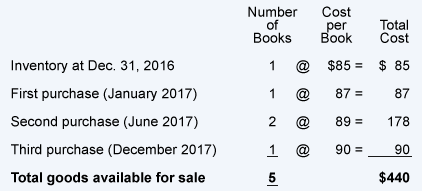
If I buy 50 products at $100 each, and tomorrow the price shoots up to $150, my inventory is suddenly worth more.
But if the price drops tomorrow to $50, my inventory is worth less.
And watch out for ‘shrinkage’!
That’s when you suddenly have less inventory than what you’re supposed to.
You know you bought 50 products. You know you’ve sold and shipped 40.
You should have 10 left, right?
What if you only have 8 left?
That is ‘shrinkage.’
Maybe an item got lost, or stolen, or was ruined and had to be thrown out. There are lots of reasons it happens.
The good news is shrinkage is lower when you don’t have a physical retail store.
Warehouse shrinkage is actually pretty low. Typical shrinkage is less than 1% of your total inventory.
If you’re operating a business out of your home, it’s even less likely you will have shrinkage.
After all, you’re less likely to have someone steal inventory if you’re the only one around it.
It’s also a lot harder to lose inventory in an apartment compared to a huge warehouse.
That said, shrinkage can happen to anyone.
This is why it’s important to physically count inventory regularly. You need to know if you just ‘lost’ $100 worth of product and factor that into your accounting.
4. Understand your cost of goods sold
Cost of goods sold is the expense directly tied to the products you sold.
This is the inventory sold plus how much it cost to make that inventory.
Let’s say you sell one widget. Whatever it cost you for the parts plus whatever it cost to build it should be the cost of goods sold for that widget.
If the parts of the widget cost $50, packaging cost $10, and you paid someone $25 to put it together, your cost for that widget is $85.
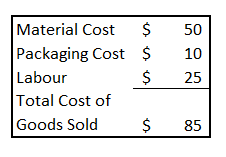
This can get a lot more confusing to figure out if you bought a lot of widgets at different prices, and you’re paying different people different salaries to put them together.
Don’t overcomplicate things.
The easiest way to figure it out is to use a weighted average. Here’s an example of calculating a weighted average:

($440 divided by 5 is $88.)
Anything that is tied directly to your products and has a cost increase when you make more stuff should be in cost of goods sold.
If you pay employees per every widget they make, include their labor.
If you pay them a flat hourly rate even if they don’t make a single thing that day, don’t include their labor in the cost of goods sold.
The retail price of an item minus the cost of that item is your ‘gross margin.’
This is not your profit. It just tells you how much you’re making on each item before you add in all your other expenses.
Things can get pretty complicated here if you have different costs for different sales conditions.
For example, do you offer free shipping on all orders over $100?
This means your cost of goods sold is going to increase every time a customer buys more than $100 worth of stuff.
It will also change for each different location you ship to.
Some websites will tell you not to include shipping in costs of goods sold.
I disagree. ‘Freight out’ goes up or down with the volume you sell.
To simplify it, let your accounting system track your actual cost of goods sold. If it’s linked to your e-commerce site, it should be able to do this automatically.
For predicting your future cost of goods sold, save yourself a headache and just use an average.
If last month you sold $1,000 and paid $150 for shipping, that’s 15%.
So you can assume that if next month you sell $2,000 you will probably pay $300 (or 15%) for shipping.
It won’t be perfect, but it’s better than just leaving the cost out of planning.
Here’s a simple way to calculate your rough average cost of goods sold, including shipping, packaging and any other e-commerce fees:
5. Calculate all other expenses
Now you know your costs directly tied to sales volume.
Next, you need to understand how much everything else is costing you.
Any expenses that don’t increase when you sell more or decrease when you sell less are called ‘fixed expenses.’
For example, if you pay a monthly rent, the amount is fixed. It won’t change whether you sell one widget or one million.
These costs aren’t part of the cost of goods sold and aren’t factored into your gross margin.
They do affect your profit and your cash flow, though.
- Rent
- Utilities
- Insurance
- Property Tax
- Interest on loan payments
- Salaries
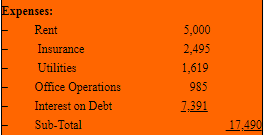
These expenses are considered ‘fixed’ since you have to pay them even if you sell nothing next month.
Don’t get this confused with an expense being the exact same amount every month.
An expense like utilities might be more one month than the next. Or it might be more in the winter than in the summer.
It’s still a fixed expense in accounting terms.
If any expense changes month-to-month, you should use an average for budgeting.
6. Figure out your break-even sales requirement
Budgeting and planning are important parts of running a business.
After all, you’re not going to just want to know if you made a profit last month, you’re going to want to know if you expect to make one this month and next.
Your break-even sales amount is the amount of sales dollars you need to earn to cover all of your costs.
For example, let’s say all your ‘fixed costs’ add up to $5,000 per month.
This means you have to sell enough of your product to cover the cost of making them (including the labor) plus an additional $5,000 just to break-even (no profit and no loss).

Figure out your gross margin per unit (from the fourth basic).
Then divide your fixed costs by that amount to figure out the number of units you need to sell.
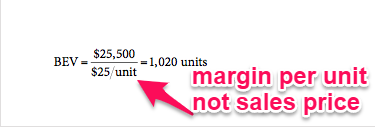
If your break-even number of units is 5,000 and you think you can only make or sell 3,000, you know you’re in trouble.
If break-even is 5,000 and you think you can make and sell at least 10,000 then you know you should be making money.
Remember that your fixed costs don’t easily change.
For example, if you’re in a five-year lease, you’re going to struggle to find a way to lower your rent.
This means if your break-even seems too high, you should first look at either raising your prices of trying to lower your costs of goods sold.
You could do this by charging more for shipping, using cheaper materials or finding cheaper labor.
Here’s a visual of break-even:
7. Track your sales and profits before tax
Now you know how many items you need to sell to break even.
Next, you need a way to track your sales.
This lets you know early on if you’re going to have an issue. It will also help you manage your money.
Let’s say you figured out you need to sell 5,000 units to break even.
It’s now the 15th of the month, and you’ve only sold 1500.
If you’re tracking your sales, you’re able to notice this. Now you have time to do something about it.
You still have two weeks left to try and drum up more business with some extra digital marketing efforts.
Just make sure that if it’s paid marketing, you figure the cost of that into your budget.
After all, if you spend $2000 to increase sales by $1000 then it wasn’t worth it, right?
One way to track your sales is by linking Google Analytics to your e-commerce site.
Google Analytics even has a plug-in for your e-commerce site to make it easier.
Log in to your Google Analytics and go to your Admin Settings.
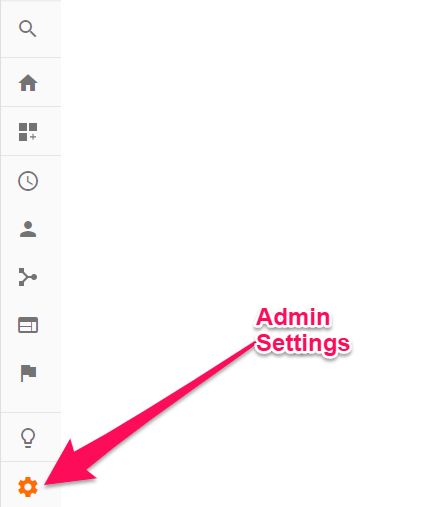
Next, go to your e-commerce settings.
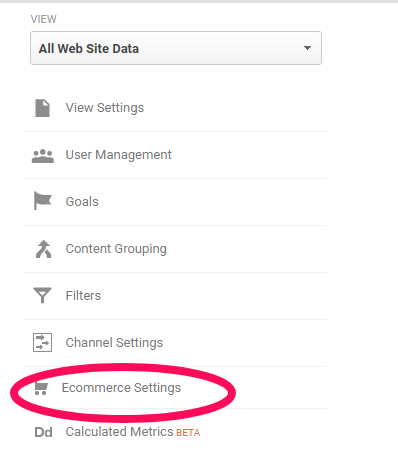
Then turn on the ‘Enable e-commerce’ switch and ‘submit.’
You can learn more about Google Analytics in some of my other posts, or check out my video.
But let’s get back to accounting.
Now that you know sales, cost of goods sold and all your other ‘fixed’ expenses, you know your earnings before tax as well.
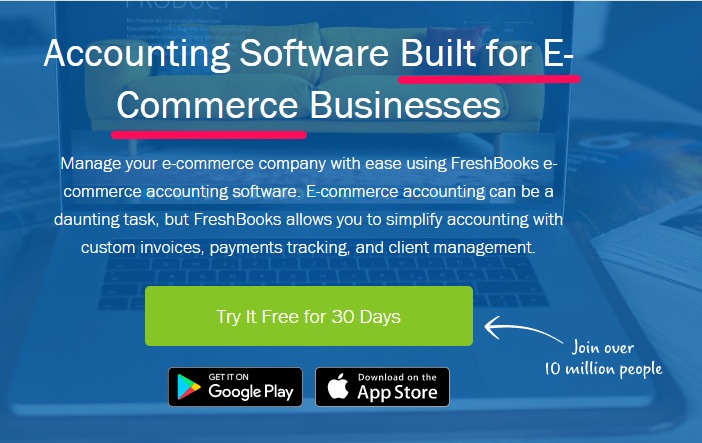
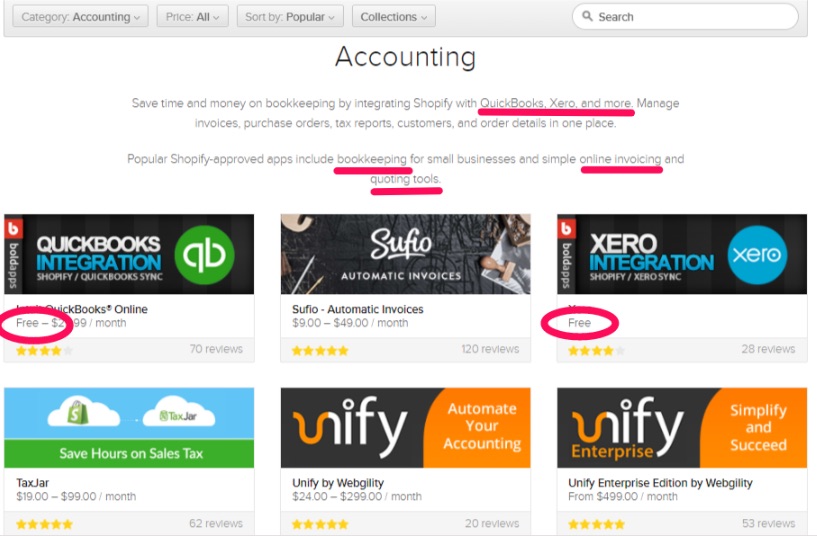



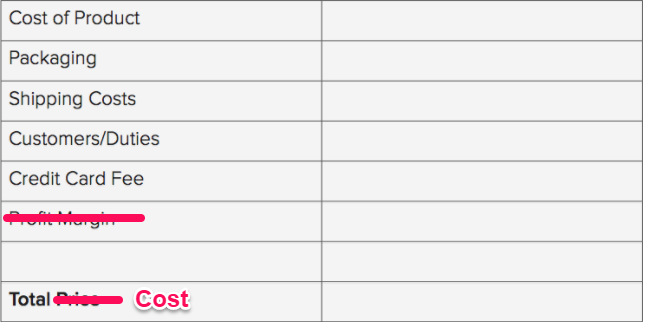
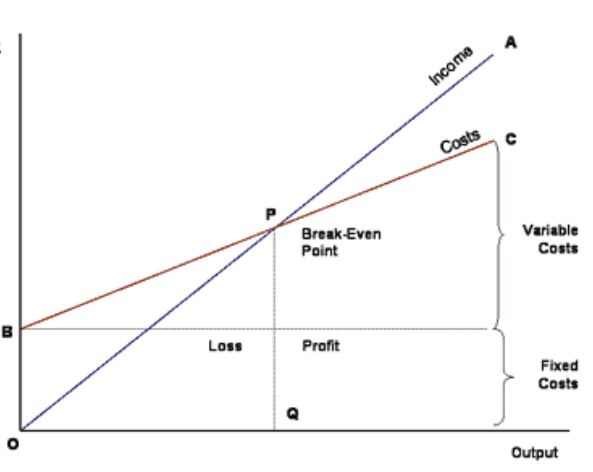

No comments:
Post a Comment